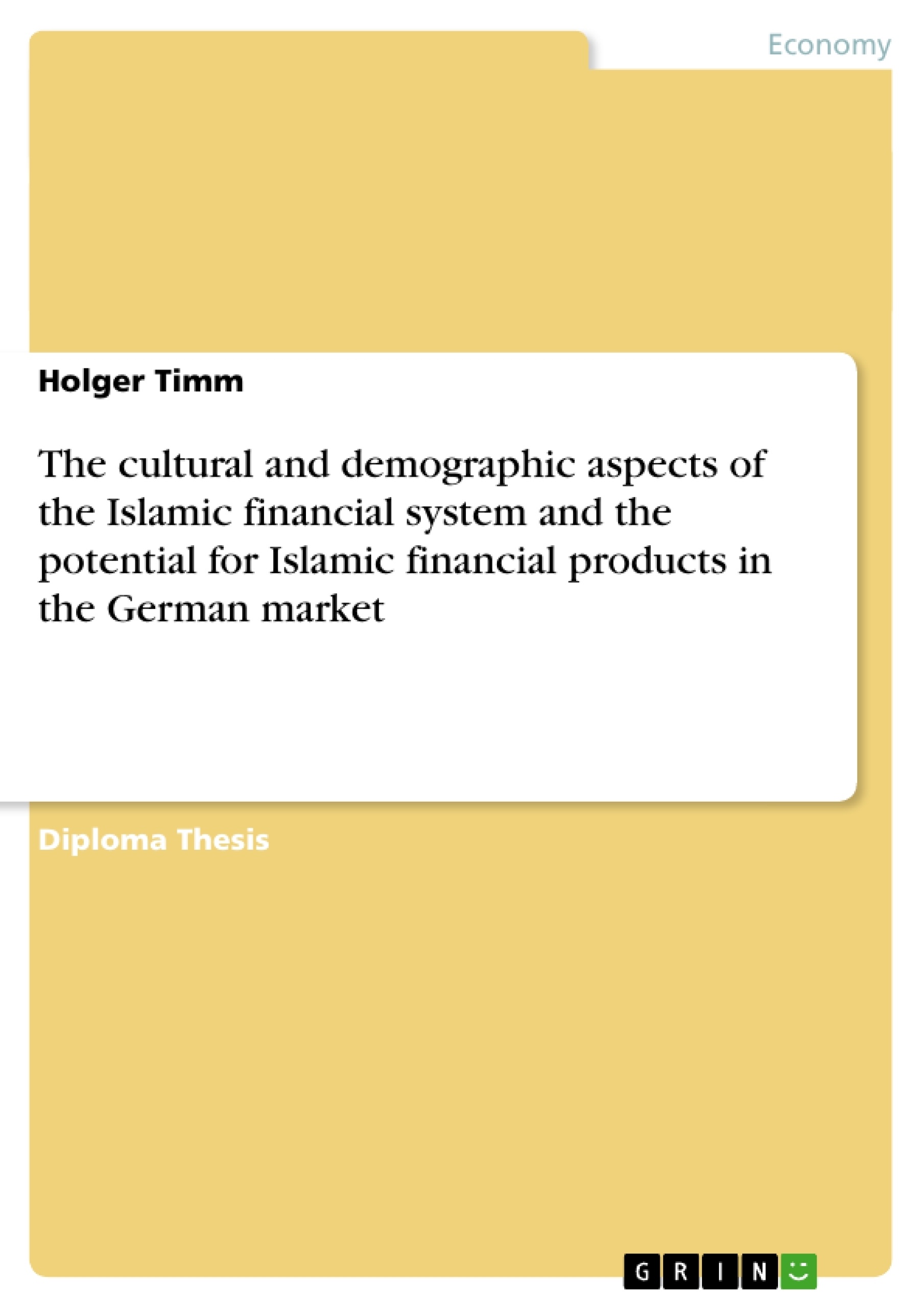The author has divided the thesis in four parts. The first chapter, “Chapter A – Islam – History, Cultural Aspects, and Principles for the Financial System“, introduces Islam, its roots and foundation about 1,400 years ago. In that chapter basic Islamic principles are explained and their relevance in all aspects of Muslim life is shown. With those principles underlying, a financial system developed which is different from the Western one. The development of the financial system is described as are various Islamic financial tools explained.
In “Chapter B – Muslims in Germany” it is shown how the Muslim community in Germany developed. It is explained when processes of migration started and to what extent they developed. The cultural and educational “Status Quo” of the Muslim community is analysed, and it is looked at their stand concerning school, work, associations, etc. Thereby Islamically cultural distinctions are outlined and resulting obstacles for integration deduced. Following that, the financial “Status Quo” is looked at. Facts about Muslim savings are provided and examples of instruments available at the German market, which are in compliance with Islamic law, are described. Out of the outlined facts in the “Status Quos” a potential analyses is developed. Future scenarios about shifts in the population structure are calculated and thereby resulting changes at the labour market predicted.
After the Muslim community and its financial situation is analysed, “Chapter C - Possibilities for Islamic Products in the German Market“ describes legal requirements set by German authorities as does it look at Islamic prescriptions for the running of a financial institution. Proposals are given how to harmonise differences to create possibilities for a financial system which encompasses both – conventional and Islamic finance. Afterwards descriptions of product examples are provided which are in compliance with German law and with Islamic law. Finally a conventional equity financing model is analysed and ways of its transformation into an Islamically acceptable model are developed.
In “Chapter D – Conclusions Deduced from the Thesis” final remarks are given concerning results achieved in the process of analysing the market and writing this paper.
It has been the author’s aim to outline complex correlations as simply as possible. By looking at selected areas of a financial system it was tried to clarify theoretical conditions with help of practical examples.
Inhaltsverzeichnis (Table of Contents)
- Acknowledgement
- List of content
- Contents in brief
- Contents
- List of tables
- List of figures
- List of Abbreviations
- List of Arabic terms
- Thesis
- Appendices
- References
Zielsetzung und Themenschwerpunkte (Objectives and Key Themes)
This diploma thesis examines the cultural and demographic aspects of the Islamic financial system and its potential for Islamic financial products within the German market. The objective is to analyze the viability of introducing Islamic financial products in Germany by exploring the cultural and demographic factors influencing their demand, as well as the legal and regulatory challenges.
- The history, cultural aspects, and principles of the Islamic financial system
- The cultural and financial landscape of Muslims in Germany
- The legal framework and potential for Islamic financial products in the German market
- The harmonization of German laws with Islamic principles
- The transformation of conventional financial instruments into Islamically compatible alternatives
Zusammenfassung der Kapitel (Chapter Summaries)
- Chapter A - Islam - History, Cultural Aspects, and Principles for the Financial System
- This chapter provides a foundational understanding of Islam, outlining its history, key cultural elements, and principles governing the financial system.
- It explores the five pillars of Islam and discusses the concept of Islamic banking.
- Chapter B - Muslims in Germany
- This chapter examines the Muslim population in Germany, analyzing aspects such as demographics, cultural integration, and their financial status.
- Chapter C-Requirements and Proposals for Islamic Financial Products in the German Market
- This chapter delves into the legal requirements and challenges posed by the German market for introducing Islamic financial products.
- It explores the potential for harmonizing German laws with Islamic principles and proposes strategies for implementing Islamic financial activities in Germany.
- The chapter concludes by examining the transformation of conventional equity financing concepts into Islamically compliant alternatives.
Schlüsselwörter (Keywords)
This thesis centers on the intersection of Islamic finance, cultural integration, and the German market. Key terms and concepts explored include Islamic financial system, Shariah principles, cultural and demographic aspects, legal framework, Islamic financial products, and harmonization of laws.
- Citation du texte
- Holger Timm (Auteur), 2004, The cultural and demographic aspects of the Islamic financial system and the potential for Islamic financial products in the German market, Munich, GRIN Verlag, https://www.grin.com/document/34464



